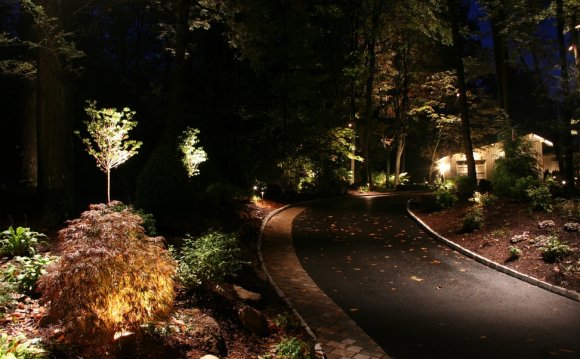
 Develop skills to visualize design. You can practice visualization skills by becoming well versed in a computer aided design (CAD) or other methods of design. These programs are often used in architecture skills and will make you a more visually creative person.
Develop skills to visualize design. You can practice visualization skills by becoming well versed in a computer aided design (CAD) or other methods of design. These programs are often used in architecture skills and will make you a more visually creative person.
- A number of universities offer CAD tutorials online for free.
- You can take a CAD or computer design program at your local college.
- I - Identify the problem: “My clients think this landscape seems to be drab and boring.”
- D -Define the problem: “This landscape needs to be revitalized and modernized.”
- E - Examine the options: “I have a budget of $20, 500 and the client wants trees, shrubbery, and new sod. My supplier has quoted me that this will cost $15, 000. What else can I do for the client to successfully meet their demands?”
- A - Act on a plan: “I will meet with my supplier on Thursday. I will take my plan and sit down with the clients on Monday. I will make final purchases on Tuesday, and begin work on Wednesday.”
- L -Look at the consequences: “Have I met my clients demands both aesthetically and financially? Are they satisfied with my work?”
- You can also take writing classes at a local university.
- There are many books to help you learn to be a better writer, such Peter Elbow’s Writing Without Teachers.
 Try some of these tips:
Try some of these tips:
- Practice speaking in front of a mirror. This will help you visualize how you speak to help you with body language and pronunciation.
- Try slowing your speech down to help pronounce every word clearly.
- Practice tongue twisters (like “red leather, yellow leather”) to limber your tongue for better diction.
- Take notes when someone else is speaking to become a better listener.
- Focus on a speaker and try and be an active listener - ask questions to show that you are listening and want to learn more.
Part 2
Making Landscape Architecture a Career- Read up on the job requirements. Understand the nature of the work that a landscape architect performs to decide if it is the right job for you.
- Landscape architecture entails much more than just planning gardens and knowing about plants.
- Landscape architects plan for the location of roads, buildings and other features as well as plants and trees.
- They work with engineers, scientists and other professionals on municipal and private projects.
- They must meet budgetary and ecological goals.
- Landscape architects require a knack for both creativity and mathematics. You must know what looks aesthetically pleasing but also know the best placement for plants, trees, and other items.
- Another aspect of a landscape architect is to restore green spaces that have been destroyed or damaged due to both nature and man.
 This may include rezoning projects, responding to natural disasters, restoring historical landmarks, or restoring/redesigning water management.
This may include rezoning projects, responding to natural disasters, restoring historical landmarks, or restoring/redesigning water management.
- Stay in touch with industry developments. Read journals, books and magazines to be aware of what is new in the industry. You can educate yourself on the latest trends and policies.
- Look into volunteer opportunities with local government, community gardens or Community Supported Agriculture groups.
- Stay current on landscaping news. There are a lot of great publications available for budding landscape architects.
- These magazines provide wonderful insights on job prospects and highlight extraordinary work done by other architects.
- Work toward a degree in an accredited landscape architecture program. Schools are accredited by the American Society of Landscape Architects (ASLA).
- A Bachelor of Arts or a Bachelor of Science degree is available and often required for a entry-level position.
 Most programs require 4 to 5 years of study to complete.
Most programs require 4 to 5 years of study to complete. - Learn more on the ASLA website for additional information on the career.
- Take classes that will help you with design such as CAD, math, communication, English, and business.
- A Bachelor of Arts or a Bachelor of Science degree is available and often required for a entry-level position.
- Get practical experience while working towards your degree. A job in a nursery, garden center or with a landscaping company or architectural firm is a good way to get more experience.
- Some schools offer or even require summer internships with landscape architecture firms or projects.
- Consider an advanced degree. Like baccalaureate study, master's degree programs are accredited by the American Society of Landscape Architects.
- A master's degree is required for employment in some firms and will offer a competitive advantage when looking for employment, as well as credibility if you decide to start your own landscape business.
Part 3
Preparing for a Landscape Architecture Licensure- Decide which state you are going to work in. Since licensing requirements vary from state to state, it may be difficult to transfer a license to another state.[Image:Become a Landscape Architect Step 9 Version 2.jpg|center]]
- If you plan to relocate in the near future, getting licensed in the state you want to settle in is probably the best option.
- Find out what the landscape architecture licensing requirements are for your state. Almost all states require landscape architects to be licensed.
- In most cases, the licensing requirements call for a combination of education from an accredited school, work experience and examinations.
- Prepare for the Landscape Architect Registration Examination (L.A.R.E.). This exam is offered by the Council of Landscape Architectural Registration Boards (CLARB) and includes multiple choice and graphic questions that test your knowledge of design, public health, safety, and welfare topics. It is divided into four sections.
- Section 1 tests your knowledge on Project and Construction Management.
- Section 2 tests your knowledge on Inventory and Analysis.
- Section 3 tests your knowledge of Design.
- Section 4 tests your knowledge of Grading, Drainage and Construction Documentation.
- Be prepared to work as an apprentice or intern for up to 4 years. State licensing requirements usually call for 1-4 years of work experience as an apprentice before getting registered as a licensed landscape architect.
- Keep up with continuing education requirements for your state to retain your license.This can include self study, workshops or classes with qualified organizations.




Source: www.wikihow.com















